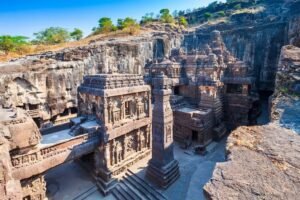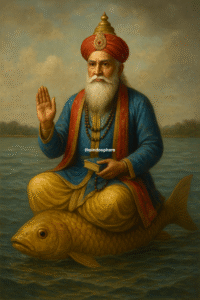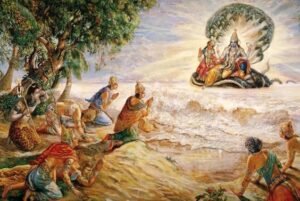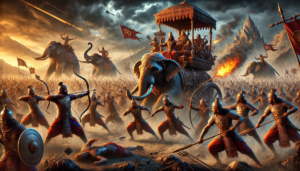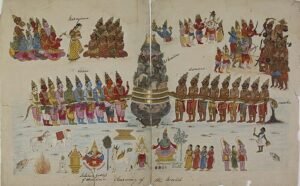Pantheon: Trimurti
Other Names: Prajapati, Svayambhu
In Hindu cosmology, the universe is maintained by a divine trinity known as the Trimurti: Brahma the creator, Vishnu the preserver, and Shiva the destroyer. Of the three, Brahma is arguably the most overlooked—and paradoxically, the most fundamental. Without Brahma, there is no world to preserve or destroy. Yet temples dedicated to him are rare, and his worship has largely faded into obscurity. Who is Brahma, and why does the god of creation sit on the sidelines of popular devotion?
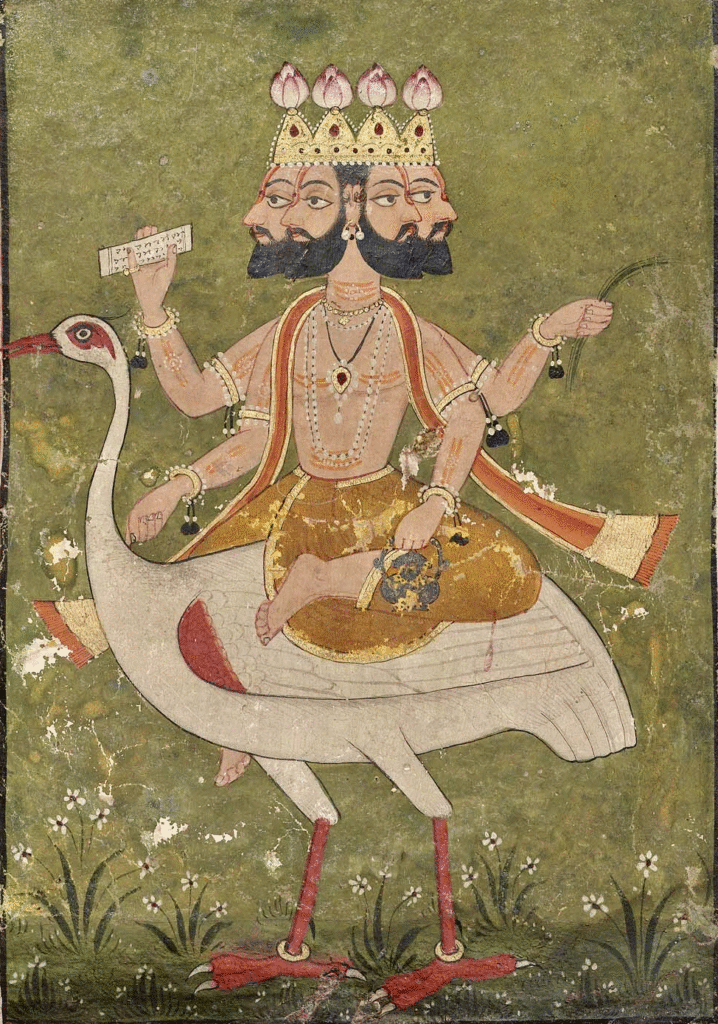
Who is Brahma? Origins and Identity
Brahma emerges from the Vedic tradition, where the concept of a universal creative force—Brahman—predates him. Initially, Brahman was impersonal, formless, and infinite. Over time, as Hindu thought evolved, this abstract idea was personified into Brahma, a deity tasked with manifesting the material universe.
According to most Puranic texts, Brahma is born from a lotus that grows from the navel of Vishnu, who lies on the cosmic serpent Ananta floating on the primordial ocean. This symbolic imagery places Brahma within the Trimurti hierarchy but also subtly implies that creation depends on preservation.
The Four Faces of Knowledge
Brahma is typically depicted with four heads and four arms, seated on a lotus or riding a swan (hamsa). His heads represent the four Vedas—Rig, Sama, Yajur, and Atharva—and point in all four cardinal directions, symbolizing omniscience and the universal scope of his knowledge. In his hands, he often carries:
- A water pot (kamandalu) – symbol of creation
- A Vedas manuscript – symbol of wisdom
- A mala (rosary) – symbol of time
- A lotus – symbol of purity and cosmic order
Brahma’s consort is Saraswati, the goddess of learning, speech, and the arts. Together, they represent the union of thought and expression—the seed of creation.
Myths and Controversies
Brahma’s mythology is full of complexities and contradictions. In one story, he creates a female figure—Shatarupa—from his own being, then becomes enamored with her. As she tries to avoid his gaze, he sprouts multiple heads to follow her. This tale has often been interpreted symbolically as the mind chasing its own projections.
However, some versions of the myth cast Brahma’s desire as problematic. In later texts, Shiva appears and cuts off one of Brahma’s heads as punishment for his inappropriate behavior, leading to a decline in Brahma’s status. This moral narrative contributes to his diminished worship in later Hindu tradition.
Decline in Worship
Unlike Vishnu and Shiva, Brahma has very few temples dedicated to him. The most famous is the Brahma Temple in Pushkar, Rajasthan, where he is still ritually worshipped. This absence is often explained through myth: in one legend, Brahma chooses a different woman over Saraswati to perform a sacrifice. Enraged, Saraswati curses him, declaring he would not be worshipped on Earth.
But beyond myth, there are philosophical reasons for Brahma’s marginalization. Creation is a one-time event. Once the universe is made, the focus shifts to sustaining and navigating life within it—functions attributed to Vishnu and Shiva. Moreover, Brahma is often seen as a symbolic archetype rather than a personal deity.
Symbolism and Legacy
Brahma is less a god of temples and more a god of ideas. He represents the creative impulse, the intellect, and the cosmic order. His legacy survives not in rituals but in concepts: the idea that creation stems from thought, speech, and knowledge.
In many ways, Brahma embodies potential—not the lived experience but the blueprint. He is the divine architect, the first spark, the mind behind the matter.
Brahma’s role in Hinduism is foundational yet fleeting. He builds the stage but doesn’t perform on it. Though his active worship has waned, the ideas he represents—creation, knowledge, and cosmic law—remain vital threads in the fabric of Hindu philosophy. To understand Brahma is to understand not just a god, but a worldview: that the universe begins with a thought, and that thought is sacred.

